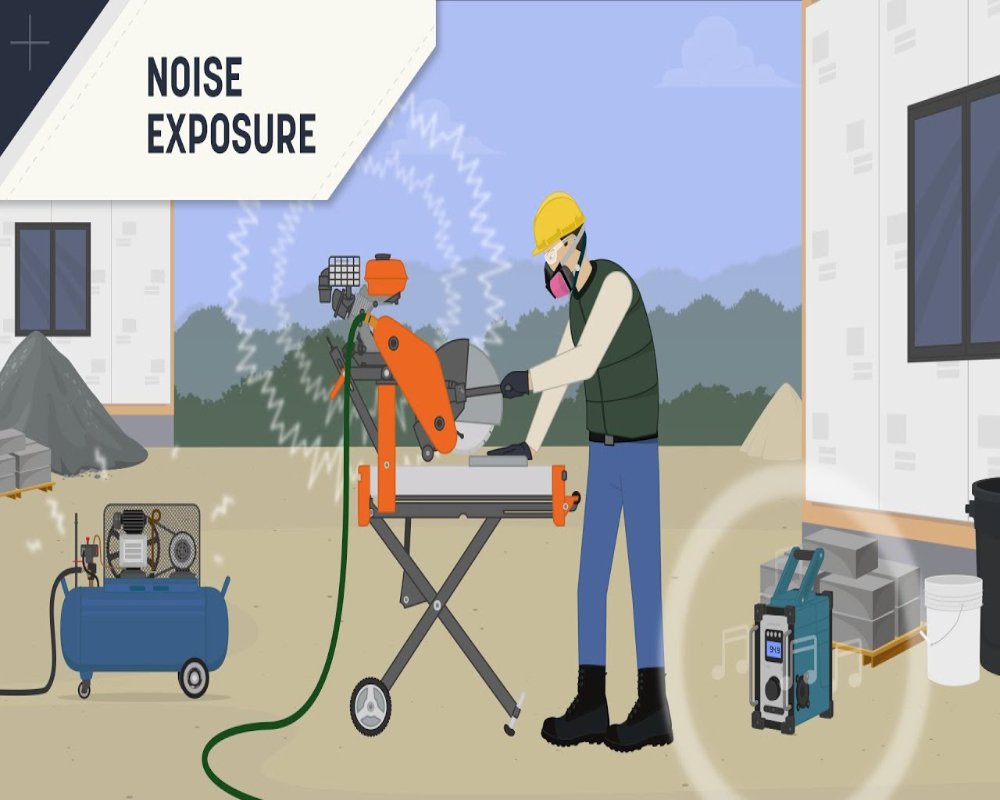Introduction
Noise exposure is a significant environmental and occupational risk associated with industrial land use. Industrial operations—ranging from heavy manufacturing and processing plants to logistics centers and construction activities—often generate high levels of mechanical and operational noise. This can pose health hazards to workers, create conflicts with nearby communities, and trigger regulatory compliance issues. As urban-industrial integration increases and environmental standards become more stringent, understanding and mitigating noise exposure risks is essential during both site selection and facility design.
Sources of Industrial Noise
The primary sources of noise on industrial land include machinery (e.g., generators, compressors, turbines), vehicular movement (e.g., trucks, forklifts, loading docks), mechanical systems (e.g., HVAC units, pneumatic tools), and construction activities. Operations such as welding, cutting, drilling, and stamping also contribute to localized noise levels. Continuous or intermittent, these sources often produce sound levels well above acceptable thresholds if not properly controlled.
Health and Safety Implications for Workers
Extended exposure to high noise levels can lead to occupational hearing loss, tinnitus, stress, fatigue, and decreased productivity among workers. Regulatory bodies such as OSHA (Occupational Safety and Health Administration) typically recommend maximum exposure limits—commonly 85 decibels (dB) over an 8-hour shift. Exceeding these limits without adequate protective measures like earplugs, soundproof booths, or acoustic enclosures increases health risks and liability for employers.
Impact on Surrounding Communities
Industrial land situated near residential or mixed-use zones can cause significant noise pollution if buffer zones, barriers, or zoning separations are inadequate. Chronic noise exposure affects the quality of life of nearby residents, disrupting sleep, concentration, and overall well-being. This often leads to community complaints, reputational damage, and legal challenges against the facility. Regulatory non-compliance with local noise ordinances can also result in fines, restrictions, or operating limitations.
Environmental Compliance and Zoning Considerations
Local planning authorities often require noise impact assessments as part of the environmental clearance process. These assessments measure projected noise levels and evaluate their compatibility with surrounding land uses. Zoning regulations may mandate noise limits during both day and night, depending on proximity to sensitive receptors such as schools, hospitals, or residential neighborhoods. Industrial sites that cannot maintain compliance may be denied permits or forced to implement costly mitigation measures.
Mitigation and Control Measures
To reduce noise exposure risks, industrial developers and operators use a combination of design, engineering, and administrative controls. These include installing noise barriers or acoustic walls, using low-noise machinery, scheduling noisy activities during off-peak hours, and isolating sound sources with insulated enclosures. Landscaping with dense vegetation can also serve as a natural sound buffer. Internally, worker exposure is reduced through PPE (Personal Protective Equipment), noise zoning, and rotating shifts to limit duration of exposure.
Monitoring and Long-Term Management
Ongoing noise monitoring ensures compliance with regulatory limits and supports proactive maintenance of equipment and noise control infrastructure. Technological tools such as decibel meters, noise mapping software, and remote monitoring systems provide real-time data to manage exposure levels. Regular audits and environmental reports are often required to maintain industrial licenses and demonstrate adherence to environmental standards.
Conclusion
Noise exposure risks on industrial land are multi-faceted, impacting worker health, community relations, regulatory compliance, and operational performance. While noise is an inevitable byproduct of industrial activity, its effects can be effectively controlled through careful planning, engineering solutions, and ongoing monitoring. A proactive approach to noise management not only safeguards occupational and public health but also enhances the long-term sustainability and acceptability of industrial developments. In an era of growing environmental awareness and urban proximity, managing noise exposure is not just a technical necessity—it is a social and regulatory responsibility.
Hashtags
#NoiseExposure #IndustrialLand #WorkplaceSafety #HearingProtection #OccupationalHealth #NoisePollution #HealthRisks #EnvironmentalImpact #IndustrialSafety #SoundLevelMonitoring #WorkerAwareness #NoiseControl #SafetyFirst #ProtectYourHearing #NoiseRegulations #CommunityHealth #IndustrialNoise #RiskAssessment #NoiseMitigation #SafeWorkEnvironment


